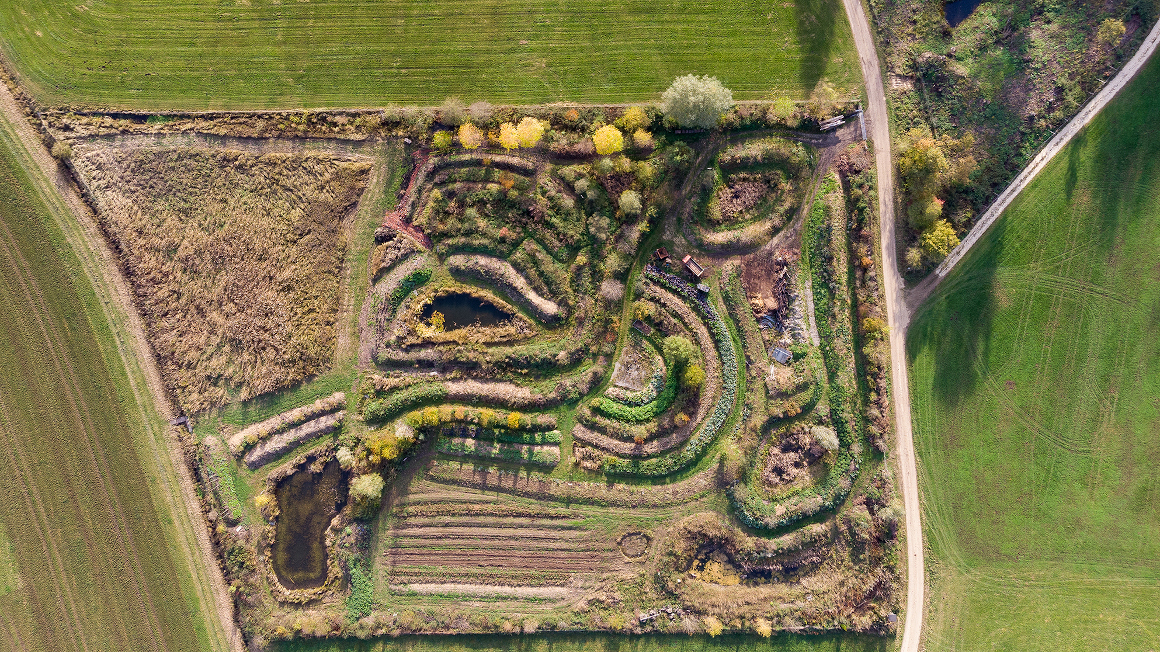Permaculture: Better soils, more biodiversity
Permaculture has the potential to combine agriculture, environmental protection and nature conservation. This is the conclusion of a study involving the Technical University of Kaiserslautern-Landau.

Away from monocultures, pesticides and heavy agricultural machinery, permaculture established itself worldwide in the 1970s as a near-natural farming concept as a counterpart to conventional agriculture. In Germany, this organic farming model has also been practised by some farmers for decades. On permaculture areas, for example, fields are supplemented with trees and shrubs. Mineral fertilisers and pesticides are not used and the keeping of livestock is integrated into the cultivation of crops.
In view of climate change and the loss of biodiversity, such sustainable concepts are therefore playing an increasingly important role in agriculture. Researchers from the Rhineland-Palatinate University of Technology Kaiserslautern-Landau (RPTU) and the University of Natural Resources and Life Sciences (BOKU) in Vienna have now analysed the effects of the permaculture concept on the environment for the first time. ‘Although permaculture projects have been established all over the world since the 1970s, there have been surprisingly few accompanying scientific studies. We wanted to close this gap and investigate whether permaculture actually has the often-publicised positive effects on the agricultural ecosystem in practice,’ explains environmental scientist Julius Reiff from RPTU.
As part of the study, nine farms that work according to this near-natural concept were examined more closely. Various indicators of biodiversity and soil quality were analysed for permaculture areas in Rhineland-Palatinate, Bavaria, North Rhine-Westphalia, Lower Saxony and Luxembourg and compared with the corresponding data from neighbouring conventionally farmed areas. The researchers used soil samples to determine humus and carbon content, micro- and macronutrients and the activity of soil microorganisms. The species diversity of earthworms, birds and plants was therefore the measure for determining biodiversity.
Higher soil quality and biodiversity
The results of the study are promising. Soil quality and biodiversity were significantly higher on permaculture areas compared to the surrounding conventional agricultural land, the researchers write in the journal Communications Earth & Environment. The carbon and humus content of the permaculture soils was comparable to the values in grassland, which has the highest humus content of all agricultural and forestry areas in Germany. Due to the higher water and nutrient storage in humus-rich soils, such areas are better able to withstand dry periods. These soils also had a higher nutrient content, even though no mineral fertilisers are used in permaculture. The researchers therefore assume that the nutrient content of the crops grown on these soils is also higher.
According to the researchers, biodiversity also demonstrably benefits from the sustainable cultivation system. In addition to the significantly higher number of soil microbes, the number of bird species, earthworms and plant species on the permaculture plots was three times higher than on the conventional comparison fields. ‘Permaculture appears to be a much more ecologically sustainable alternative to industrial agriculture,’ summarises Reiff.
The researchers believe that the higher biodiversity is not only due to the absence of pesticides, but also to the cultivation of mixed crops, which are usually grown in combination with woody plants. The cultivation of trees and shrubs on arable land or pastureland is characteristic of so-called agroforestry systems, which are used in permaculture.
‘In view of the challenges of climate change and species extinction, the observed improvements in biodiversity over a larger area would represent a real trend reversal,’ emphasises ecosystem analysis expert Martin Entling from the RPTU.
No loss of yield through permaculture
In addition to the ecological benefits, the concept of permaculture also appears to be economically worthwhile. According to the study, the yields are comparable to those of industrial agriculture. The researchers plan to publish the relevant data soon.
Creating financial incentives for sustainable cultivation systems
The researchers conclude that in order for the permaculture system to become established on a large scale, not only would educational systems in agriculture have to be changed, but financial incentives would also have to be created in the EU and existing subsidies ‘restructured’ in favour of sustainable farming methods.
bb


